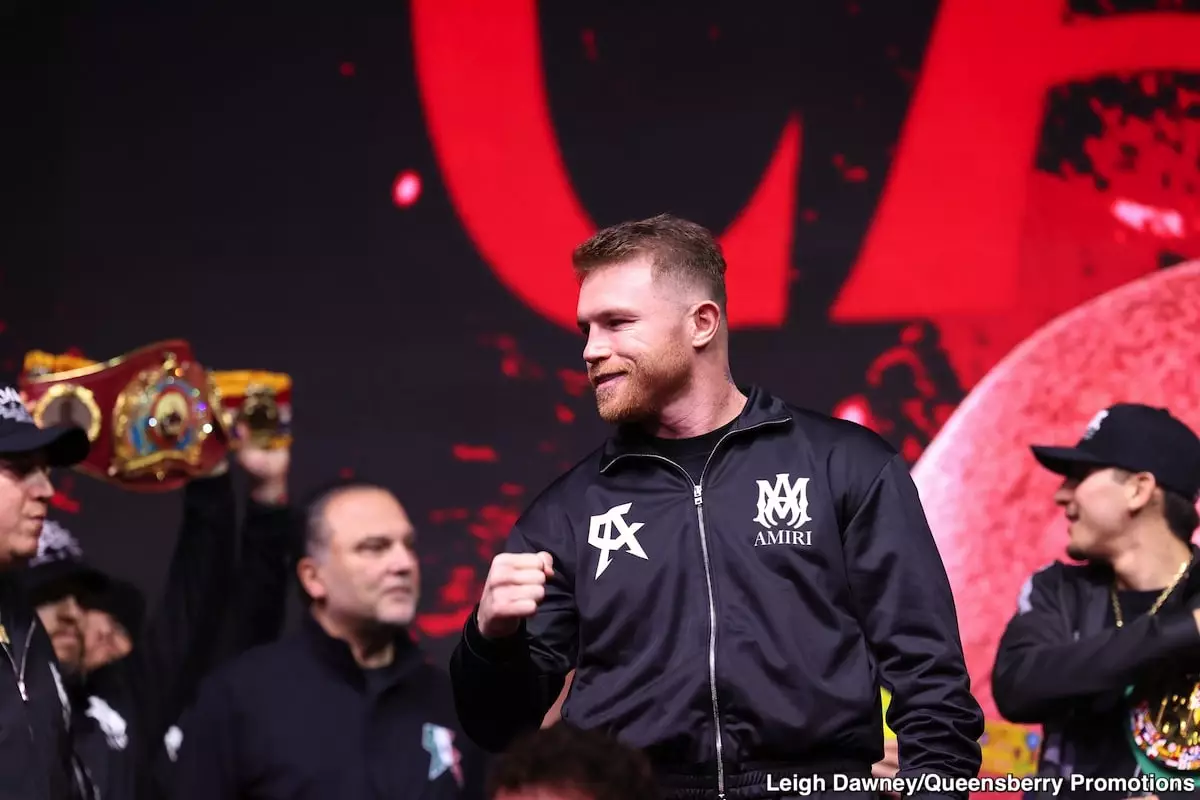In the ever-evolving landscape of professional boxing, nothing demonstrates unpredictability quite like the scheduling of fights. Canelo Alvarez, the reigning super middleweight champion, is set to defend his title against Terence Crawford on September 13th. Originally slated for September 12th, this shift has raised eyebrows and sparked speculation regarding the motivations behind such changes. Promoter Turki Alalshikh’s decision to alter the date hints at a complex web of strategic negotiations to secure the most lucrative venue among contenders: Las Vegas, Los Angeles, or New York City.
Las Vegas seems the most plausible option for this blockbuster bout, primarily because of its rich boxing history and vibrant nightlife. A venue in this iconic city would not only attract fans but would also likely offer a substantial payout to host this anticipated match-up. However, the question arises: at what cost are these decisions being made? Alalshikh’s pursuit of the “best deal” raises concerns about fan engagement and loyalty. It’s reminiscent of a game where the numbers overshadow the nostalgia and emotional investment of loyal supporters.
Saudi Arabia’s Influence
Adding another layer of intrigue is the decision to host the kickoff press conference in Riyadh, Saudi Arabia. Critics of this move argue that it sends a clear message: the interests of American fans have been relegated to a secondary position. With this fight taking place stateside, one would expect promotional events to unfold closer to home, where the majority of fans reside. Instead, global aspirations and the drive for international exposure seem to take precedence over the grassroots support that boxing so desperately needs today.
Saudi Arabia’s ambition to cultivate a boxing culture is evident, but does it need to come at the expense of die-hard fans in America? While it can be argued that staging press events abroad expands the sport’s reach, it also risks alienating those who have been instrumental in building the sport’s popularity in its home country. This tug-of-war between local loyalty and international ambition reflects an uneasy coexistence: the sport is evolving, but not always in ways that prioritize its core supporters.
The Popularity Paradox
Clearly, Terence Crawford faces a challenge not only in the ring but also in the court of public opinion. While he boasts a stellar record and technical skill, his appeal appears limited to hardcore boxing aficionados. This discrepancy stands in stark contrast to fighters like Canelo Alvarez, who captivates a broader audience. The lack of casual fan understanding surrounding Crawford’s style of fighting means that, in the grand theatre of boxing, audience engagement plays a critical role.
Much like supporting actors in a blockbuster film, Crawford opposes a superstar who, love him or hate him, has stolen the spotlight. With rising talents like Jaron Ennis and David Benavidez generating buzz, Crawford must find a way to elevate his status in a competitive landscape that favors brawling over boxing finesse. Should he aspire to capture the attention of a wider fan base, he needs to engage with the playful, entertaining aspects of boxing. Ultimately, the challenge of transforming a respected craftsman into a fan-favorite entertainer underlines the wrestling match within the boxing world itself—an arena where narratives often supersede skill.
As the fight approaches, anticipation builds, but so too does the scrutiny regarding what it means to be a champion in today’s boxing ecosystem—a question that may dominate discussions beyond the final bell.


Leave a Reply